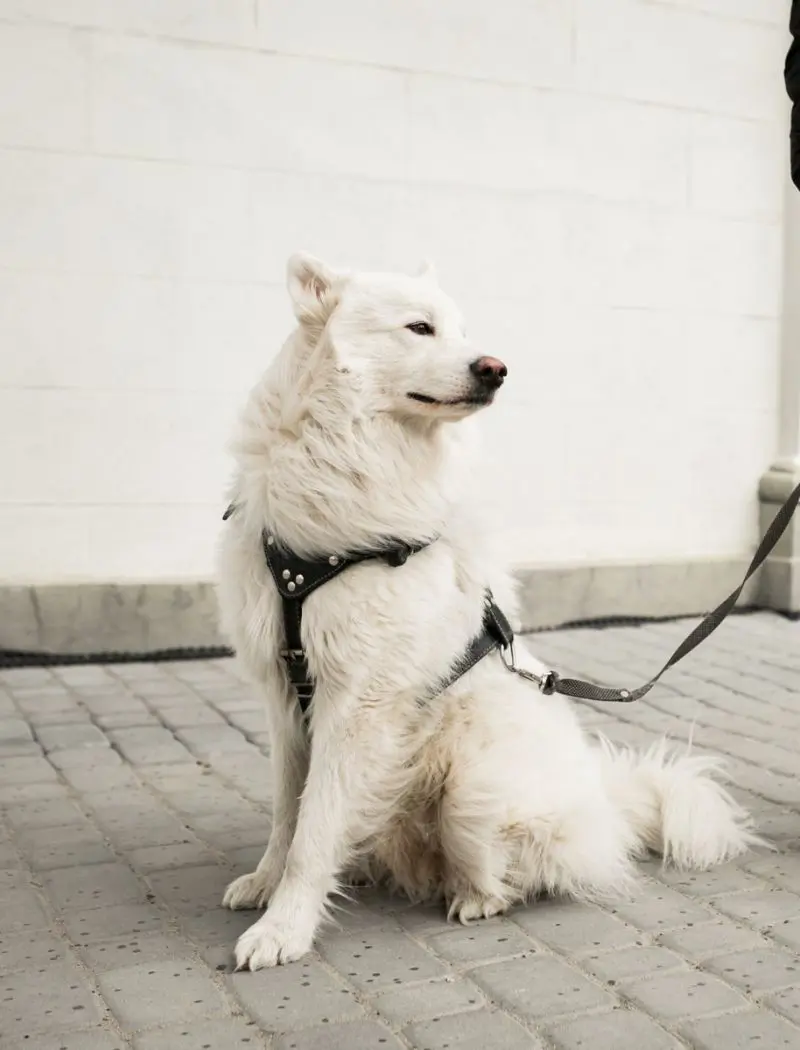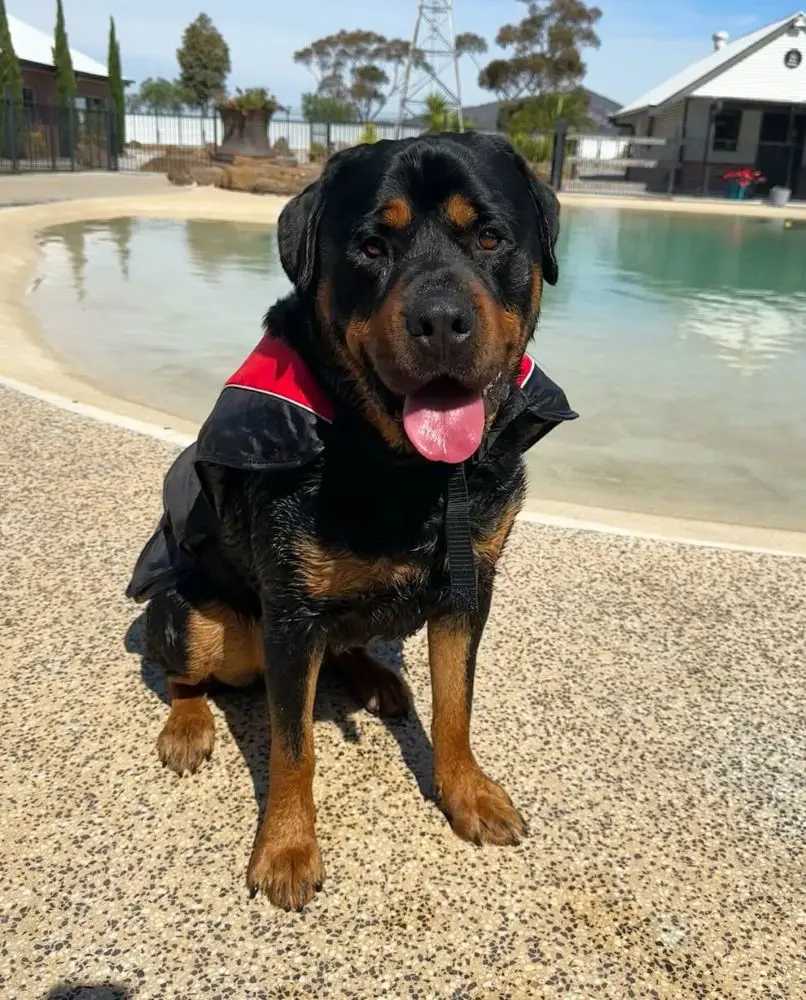Do All Dogs Swim Naturally?
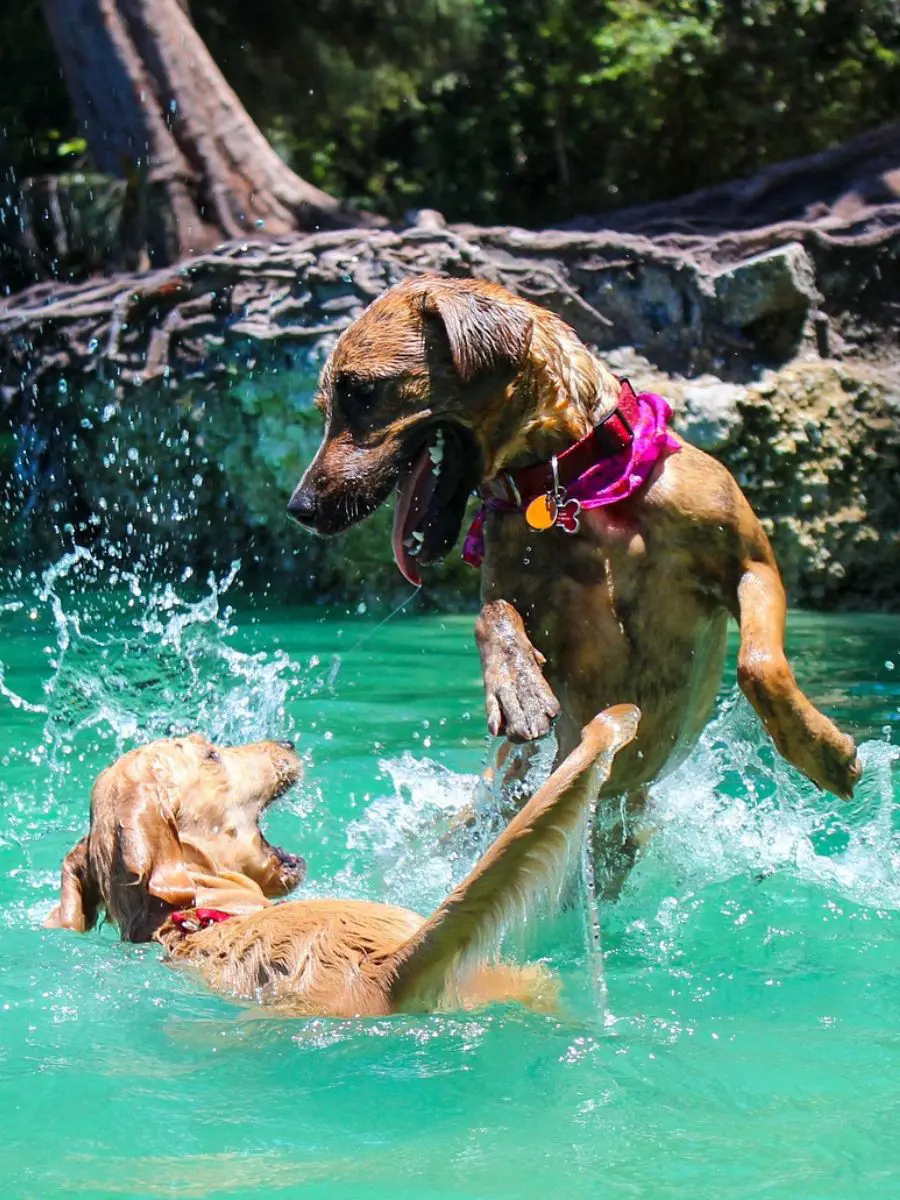
Dogs and swimming often go hand in paw, as many dogs are natural floaters with a dedicated empathy for water. Swimming is an intuition for many dogs, mainly breeds with corporal qualities such as webbed feet and strong swimming potential.
Not all dogs are born swimmers, and some may feel worried or uncertain about water. Some breeds and individual dogs may need moderate introductions to swimming surroundings and may benefit from using dog-specific life jackets for added safety.
Dogs That Are Natural Swimmers
Countless dog breeds are generally willing to swim due to their physical distinction and historical character. These breeds have a natural rapport for water, but it's necessary to introduce any dog to swimming cautiously and make sure of their safety in and around water.
Labrador Retrievers
Labrador Retrievers are one of the most well-liked dog breeds known for their love of water and extraordinary swimming capacity. Labradors have webbed feet, which act like natural paddles, permitting them to move rapidly and proficiently throughout the water.
Their influential, muscular build provides the vigor required to swim long distances without drooping comfortably. Further, they acquire a thick, water-resistant double coat that protects them from cold water warmth and helps keep them floating.
Golden Retrievers
Golden Retrievers are illustrious for their keenness for swimming, much like their close folks, the Labrador Retrievers. They own numerous corporal features that make them exceptionally adequate for marine activities.
Golden Retrievers have strong, fibrous legs that provide them with the power and tolerance to swim adeptly and for long periods. Furthermore, their heavy, water-impervious coat keeps them snuggly and vivacious, authorizing them to remain congenial even in colder water coolness.
Newfoundlands
Newfoundlands are huge, dominant dogs known for their noteworthy floating abilities and have a storied history in water rescues. Their astonishing toughness, forbearance, and natural swimming expertise make them eccentrically suited for deepwater work.
Newfoundlands was bred by fishermen in Newfoundland, Canada, to oblige with numerous tasks at sea, such as humping nets and reclaiming items or people from the water. They have a strong, muscular build and brawny buttocks, enabling them to impel themselves effortlessly past the water.
Portuguese Water Dogs
Portuguese Water Dogs are an extremely proficient breed, definitely bred to help fishermen through the coast of Portugal. Their distinctive quality makes them surprisingly suitable for working in native-to-water environments.
These dogs have a thick, water-resistant coat that safeguards them from cold and damp conditions while also minimizing pull as they swim. This coat is time and again curly or wavy, helping to enclose them and keep them bouncy in the sea.
Chesapeake Bay Retrievers
Chesapeake Bay Retrievers, usually known as Chessies, are esteemed for their energy, fortitude, and unexpected plunging abilities, mostly in cold and demanding waters. Chessies hold a murky, greasy, waterproof duplex coat that bestows magnificent cover against frigid temperatures, qualifying them to be carried out in icy waters where other breeds might struggle.
Their strong, stout build and strong, powerful limbs hand out to their potential to swim long distances. Magnificant companionship for energetic individuals and families who enjoy outdoor activities and water sports.
Irish Water Spaniels
Irish Water Spaniels are known for their atypical diving abilities and harmony with water, making them formidable water dogs. This breed is distinguished by an eccentric, curly, watertight coat that defends them from the cold and drenched state.
In addition to their limited coat, Irish Water Spaniels have a well-built and nimble build that makes them tremendously constructive swimmers. Their strong bodies, powerful legs, and large, webbed feet allow them to move speedily and adeptly rigorous the water.
Standard Poodles
Despite their generally charismatic character, Standard Poodles have a rich history embedded in trapping and recouping games from water. Their acuteness empowers them to move briskly and proficiently in the water.
A key trait that puts up with the Standard Poodle’s swimming potential is its differentiating curly coat. Their passion and love for water make them natural contributors to activities like dock diving and water reclaiming competitions.
Dogs Which Cannot Swim
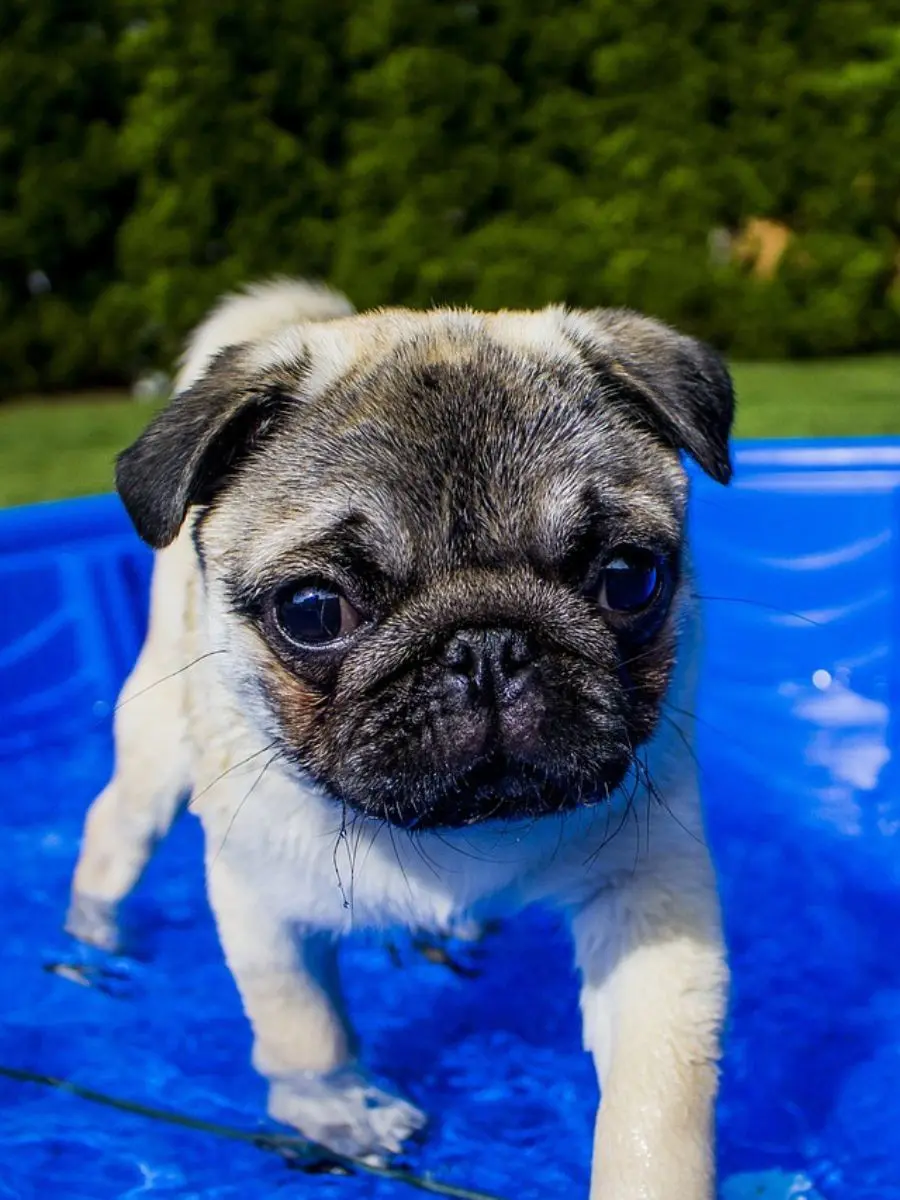
Certain dog breeds are not equipped to swim due to their physical attributes. These dogs usually grapple with water and may be at risk of drowning without actual administration and safety measures.
Bulldogs
Bulldogs are familiar with their heavy, fibrous build and wide chests, which, while giving them a vigorous aspect, can make swimming peculiarly demanding. These physical features come to light with their low exuberance, meaning they scuffle to stay afloat.
Further, their short legs make it strenuous for them to sweep productively, bringing down their capacity to move steadily or keep their heads above water. Breathing problems composite these claims. Bulldogs are a brachycephalic breed, distinguished by their short, flat faces. This facial formation can cause notable respiratory trouble, especially during strain.
Pugs
Pugs, much like Bulldogs, face rare defiance when it comes to swimming. Their sturdy build and short legs make it arduous for them to paddle proficiently, turning down their ability to stay drifting or move beneficially in the water.
Moreover, pugs are a broad-headed breed, meaning they have short, flat faces with condensed airways. This eccentric facial formation, identified by slender nostrils and an enlarged soft palate, can cause breathing awkwardness even during mild physical activity.
Dachshunds
Due to these bodily restrictions, Dachshunds are not instinctively proficient swimmers and may fight to handle water successfully. Their extended fingers and tiny limbs make it onerous for them to stay over and hover competently in the water.
The asymmetric length of their bust incorporated with their short limbs collides with their enthusiasm and swimming potential. This can swiftly tire them out, making draw-out swimming sessions both arduous and dangerous.
Boxers
Boxers, with their athletic setup and profound torso, face multiple confrontations when it comes to swimming. Their sturdy frame influences their exuberance, making it firm for them to remain floating.
Furthermore, boxers have teeny muzzles and personalities of broad-headed breeds. This exterior shape is conducted for breathing concerns, which can be aggravated through vigorous movements such as swimming.
Shih Tzus
The blending of their restricted wing length and dense fabrication upsets their springiness and potential to walk dexterously along water. This form composition makes it tough for them to spade completely, foremost due to minimized swimming propensity.
Their condensed artery and tapered nostrils make it harder for them to get sufficient air although striving themselves, such as during swimming. The brawl to breathe properly increases the risk of water devouring and respiratory torment.
Basset Hounds
Basset Hounds' large, flabby ears can be more distantly more complex swimming. When damp, these ears become weighty and can haul in the water, leading to the trouble of keeping their head high up the facet.
Their legs are not prolonged adequate to come up with the obligatory momentum, and their general weight can make it onerous for them to sustain stability in the water. This dearth of lightness and momentum means that Basset Hounds have to strive for extra attempts to stay unsinked.
Corgis
Despite their warmth and acuteness on rigid ground, Corgis quickly flags when striving to swim. The formation of a Corgi’s body is not beneficial to methodical monoeuvre in water.
Their shape composition needs more work to prolong eagerness and coherent development in the water, making string-out swimming an energetic activity. For Corgi owners, it’s necessary to oversee their pets intimately around water.
Maltese
Maltese dogs experience considerable exceptions when it comes to swimming. Their dainty size means they can be easily undermined by waves or movement.
Likewise, Maltese dogs have lengthy, flowing coats that, while beautiful, pose a notable summons when swimming. When wet, their coats can become saturated, which increases their weight and a more distant understanding of their exuberance.
Does Swimming Come Naturally To Dogs?
Swimming does not come consistently to all dogs, even though some breeds are spontaneously good swimmers. While many dogs have a natural capacity to swim, others may need training and assistance to become enjoyable in the water.
Specific breeds take to swimming with confidence due to their physical build and historical purpose, while some may find it demanding to maintain enthusiasm and demonstration in the water. Even if a breed is commonly known for its swimming potential, individual dogs may vary in their solace level with water.
It’s important to launch dogs to swim moderately, using a positive foundation, and providing safety measures such as life jackets, especially for those not normally prepared to swim.
How To Teach A Dog To Swim?
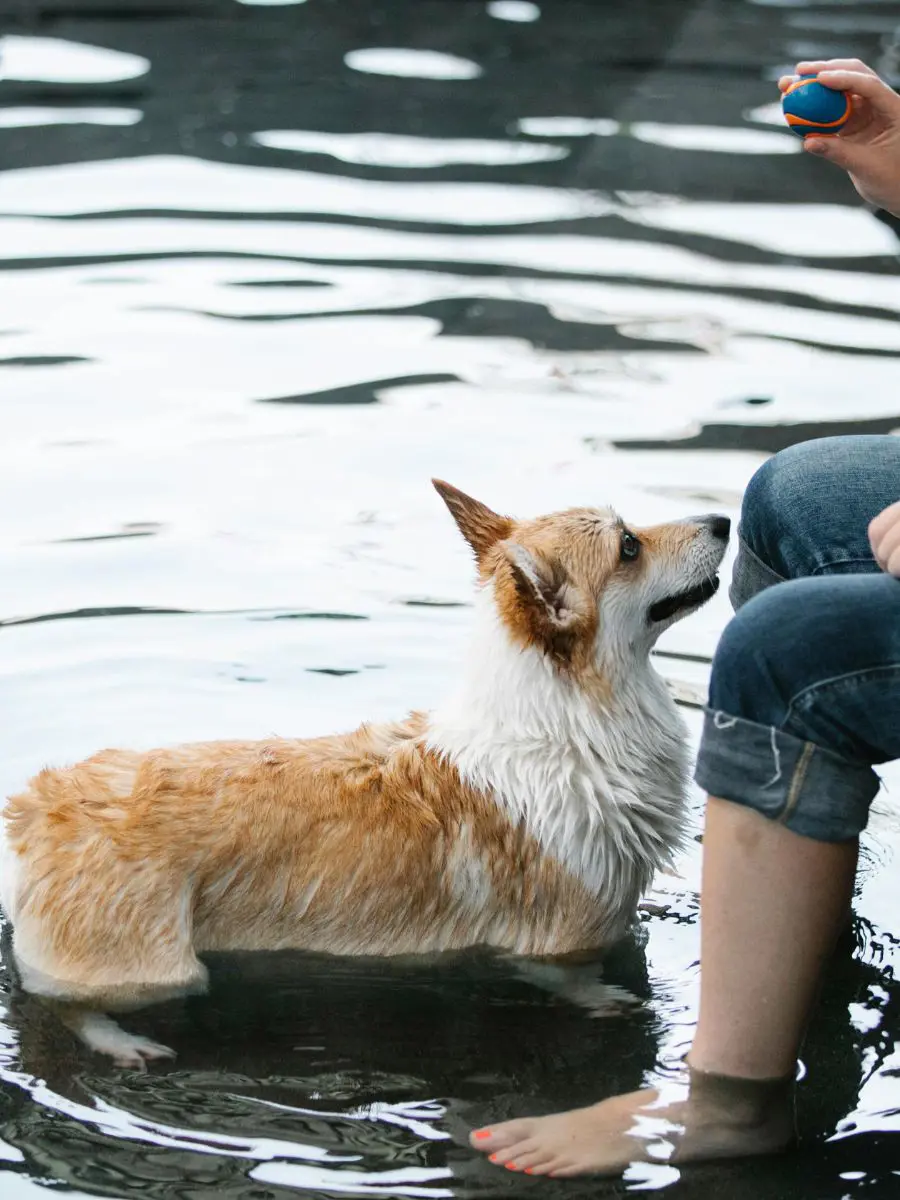
Teaching a dog to swim necessitates tolerance, positive augmentation, and careful administration. By certifying a positive, safe environment, you can help your dog learn to enjoy swimming and build their assurance in the water.
Choose the Right Location
Begin in a superficial, tranquil area where the dog can stand restfully, such as a kiddie pool or the simplistic end of a lake. Guarantee the water is clean and free of menace like strong draughts or sharp objects.
Avoid areas with strong streams, which can be profuse and threatening for a dog just learning to swim. Warm water is commonly more cozy and tempting for dogs.
Introducing the Water Gradually
Authorize your dog to delve into the water at their own pace. Let them get used to the commotion of wet paws. Use toys or delicacies to uplift your dog to enter the water. Keep sessions short and positive.
Keep your starting sessions short to dodge overwhelming your dog. Always use constructive boosting, such as praise, delight, and devoted motioning, to bounty your dog for their attempt and development.
Use a Life Jacket
Using a life jacket is a foremost safety measure when teaching a dog to swim. A life jacket supplies the necessary exuberance, helping your dog stay afloat and maintain firmness in the water.
They make sure that your dog remains above water, allowing them to focus on learning how to spoon and move successfully without struggling to stay floating.
Encourage Basic Moments
Delicately support your dog while they’re in the water. Cautiously reduce support as they obtain assurance.
Motivate them to make paddle moves by moving their paws. You can also slowly move their legs in a sculling motion to help them understand the maneuver essential for swimming.
Monitor Closely
Observing your dog nearly during swimming sessions is pivotal to ensuring their protection and prosperity. Always keep a watchful eye on your dog to watch for indications of fatigue.
Confirm that your dog has effortless approach to exit the water. Even if you’re at a pool, lake, or beach, make sure there are clear and safe way-out points where your dog can climb out if needed.
Practice and Patience
Conducting tolerance and generally increasing the continuity of swimming sessions are key to helping your dog become enjoyable with swimming. Originally, desire for just a few minutes in the water, allowing your dog to get used to the sensation
Managing a positive and uplifting environment is essential. Fend off pushing your dog ahead of their comfort zone and be patient as they learn.
Can Dogs Swim In Chlorine Pool?
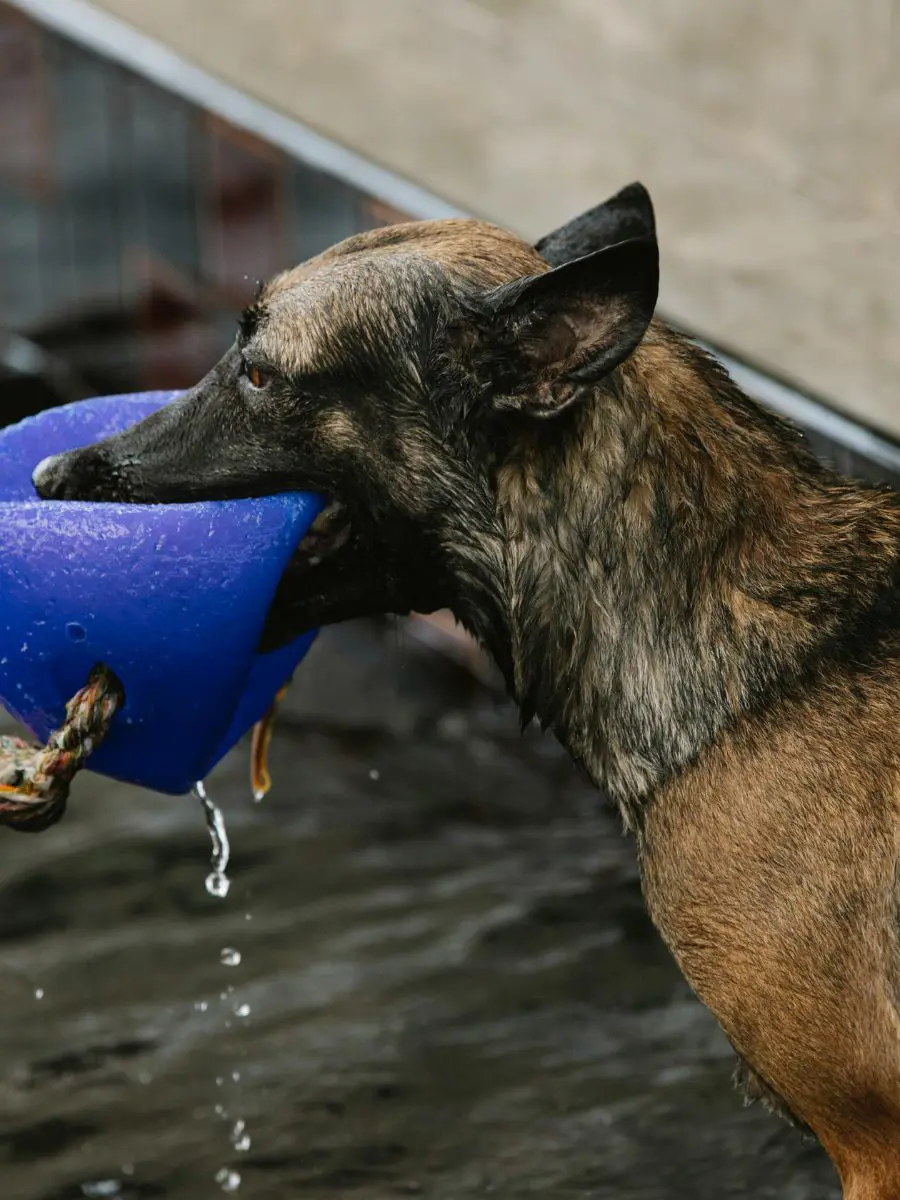
Yes, dogs can swim in chlorine pools, but specific anticipation is obligatory to ensure their welfare. Chlorine is used in pools to sterilize and keep the water clean, but it can exasperate a dog's skin, eyes, and ears if they are exposed to it habitually or with close attention.
To keep down the risks, rinse your dog with fresh water promptly after swimming to remove chlorine surpluses from their skin and coat. This helps avert dehydration and irritation. Moreover, pay special observation to their ears, as chlorine can intensify ear infestation or cause uneasiness.
Make certain that your dog’s ears are rigorously dry after swimming. Be careful of your dog drinking pool water, as ingesting chlorine can upset their stomach.
Recent posts
Dogs
What Are Dogs Afraid Of? 10 Common Dog Fears And Phobias
Becoming a dog owner comes with certain responsibilities, including identifying their fears and phobias. From an unpleasant sound to an unfamiliar scent, many factors can trigger a fear response. Understanding a dog's psychology can be complicated; a...
How To Put A Dog Harness On: Step By Step
A dog harness is a popular and safe alternative to a neckband that is designed to distribute pressure more equally across the structure while walking or running. They are worn around the chest and torso, making them a comfortable option for many dogs...
15 Webbed Feet Dogs Breeds That Can Swim
Dogs often become excited when they are near a water body like a pool, river, or beach. Unlike cats, canines are not wary of water and are usually seen enjoying their swims at their nearby water hole. However, enthusiasm alone doesn't dictate a dog's...
20 Fun Activities For Dogs During Winter
Winter can be a great time to embrace the chilly season with creative activities that keep your furry friend happy and entertained. They provide a perfect opportunity to explore unique ways to bond with your dog. From snowy outdoor experiences to coz...
How To Introduce Baby To Dog: A Step By Step Guide
Adding a new baby to your home is exciting, but it can also be a big change for your dog. A dog's natural curiosity involves a patient, prepared, and considerate introduction to a newborn baby. A smooth transition is important for the safety of your ...
Do Dogs Cry? What Does Their Tears Mean
Dogs are known to shed tears as a way to lubricate their eyes and not because of sadness or emotional pain like humans. Tears in dogs may indicate medical issues like eye infections or blocked tear ducts that may cause discomfort to them. It is very ...

